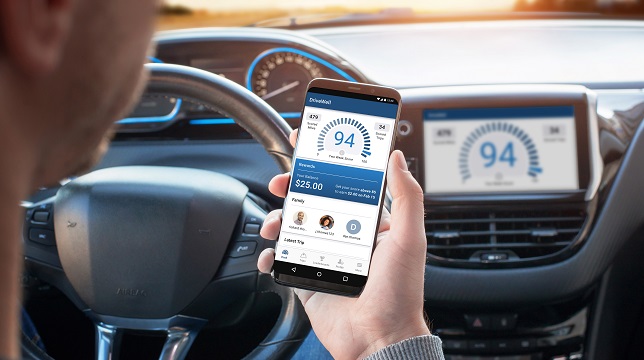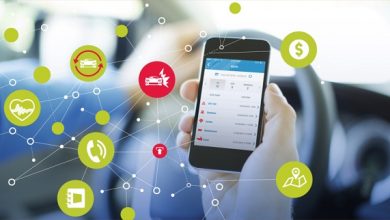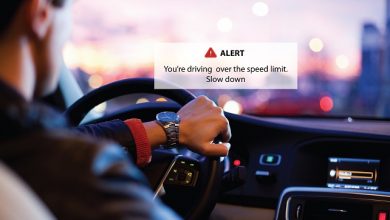Balancing risks between telematics, insurers, and car manufacturers
Actuarial data science will require merging heterogeneous datasets from multiple sources; three-way partnerships allow each partner to do what they do best.

As you head out the door you just have to make sure you have your keys and your phone. You really can’t leave home without both. We love our cars, we really love our phones, and the combination has incredible potential. Today’s connected cars have precise sensors and provide a treasure trove of information on behaviors including speeding, tailgating or finding out if ADAS is being used. So do our phones: smartphones contain GPS, accelerometers, gyroscopes, compasses, barometers, and more.
These data streams together can make the roads we drive safer, change the way insurers assess risk, and create an information platform that brings immense value to the driver, insurer and auto manufacturer. Insurers and OEMs don’t need to create competing models; strategic partners who specialize in data processing and scoring are in prime position to create profitable three-way partnerships.
A new understanding of road risks
As vehicles add advanced systems like LIDAR and ADAS, they generate an incredible amount of data. The average smartphone today has more computing power than was on the Apollo 13 rocket. But even with all those sensors and computing power, the car or the phone alone both still have blind spots.
One of the riskiest situations in a car and most likely to cause a collision is when the driver is speeding, tailgating, and texting. The connected car can see the driver is speeding and that you are tailgating, but it can’t see that you are texting. The phone can see that the driver is texting and speeding but can’t see that tailgating. It is only by combining the data from both, that you can see the full risk picture. Connected vehicles and mobile telematics are not competing technologies, they are complementary technologies, and we need them both for the most accurate picture of risk.
The proliferation of phones created the epidemic of distracted driving. Today’s new cars feature huge interactive screens right in the middle of the head unit; they’re beautiful and useful but they are also exacerbating the distraction issue by introducing a whole new source of distraction. The good news is both the cars and the phones can also be part of the solution.
Modern software, hardware and cloud networks allow us to combine multiple data streams in real time. In addition to connected car data, and telematics, we can layer in computer vision enabled video, data from IoT tags, wearables, mapping, routing, weather, SPAT (Signal Phase & Timing), and other V2X data sources. For the first time we can really see, understand, and quantify the full risk picture in and around a vehicle including the good and the bad behavior, as well as the habits and patterns of the driver.
Moreover, today’s interactive safety programs from insurers, auto OEMs and other consumer and commercial apps can take the next step and engage the driver to actually modify and improve driving behavior. They can demonstrably reduce risk by reducing both frequency and severity. These apps use real-time scoring to provide easy-to-understand and proactive feedback to improve risky behavior and can give rewards for safe driving. Gamification and rewards have proven to be powerful tools to modify and improve behavior – they drive engagement, and the longer the drivers remain engaged with a telematics app, the better drivers they become. This is true both for consumer and commercial drivers.
Insurers stand to benefit first
Improving driving behaviors and reducing risk is translating into improved loss ratios and ROI for insurers. In 2021, 63% of larger insurers have measured positive ROI from their telematics programs. Moving forward, insurance and Auto OEM safety apps are expected to have more than 40% daily active users, as some insurers have already demonstrated. Such interaction rates, once reserved for social media platforms, are well within reach. Additionally, claims handling will be further enhanced by collaboration between humans and AI. Policyholders will enjoy more accurate and efficient processes, from proactive FNOL when accidents are detected, to claim triage, collision reconstruction, adjudication, and repair and payment.
Combining Datasets
The evidence is clear*, combining multiple data streams to enable real-time pro-active warnings and improving driver behavior with ongoing engagement, gamification and rewards improves road safety. Telematics-based insurance is making drivers less risky; connected insurance programs involving smartphone-based crash detection save lives. Risk is reduced on countless trips taken without distraction and loss ratios and ROI are improved. This is just the start, penetration is still very low and we are seeing rapid growth in the number and the scale of safety programs by insurers, auto OEMs, and other commercial and consumer apps.
The many active programs and their variety demonstrates it is possible to develop and successfully deploy data driven safety and insurance programs. The next challenge comes as interactive safety programs from insurers and OEMs start to scale up and with it the need to integrate the multitude of heterogeneous data sets.
Each data source sends a wide range of data points, each at varying frequencies. Connected car data from Ford looks very different from the data provided by GM. Insurers and their actuaries need coherent and reliable data. Auto OEMs want to sell their own data but there are myriads of additional telematics and complementary data sources available. Insurers cannot afford and often simply do not have the capacity to ingest multiple heterogeneous data feeds from multiple data sources. This is why data marketplaces are now vying for relevance, yet so far, none of them have proven to be market fit or generated any kind of volume. Legacy insurance risk data providers like Verisk and LexisNexis are having success providing historical vehicle data at point of quote, but lack mobile telematics, such as distraction data, or the capacity to support ongoing engagement with the driver.
Will Insurers and OEMs form three-way partnerships with value added data analytics providers to combine, standardize, normalize, analyze, score and deliver the data to insurance carriers? Will OEMs try to build this capacity in house? Will others follow the lead of Tesla, GM, and Rivian and create their own insurance products to further leverage their in-vehicle driver safety systems and capture a larger portion of the total cost of ownership? This is an evolving market, and we will certainly continue to see each of these different approaches tested. In the meantime, CMT’s ConnectedPLUS platform provides insurers and OEMs a single unified experience combining connected vehicle data, mobile telematics data, and other V2X data sources. CMT collects, standardizes, and normalizes the data, analyzes and scores the data and provides a single feed directly to their insurance partners.
Leveraging multiple data sources to both quantify and reduce risk is the future of insurance. We will continue to see Insurers and OEMs expanding their existing multi source-based programs and launching new ones. The car and the phone are both essential to the end user and therefore integrated connected vehicle data and mobile telematics data will become essential and core to future solutions.
Author:

Todd Thomas
VC Strategic Partnerships
Cambridge Mobile Telematics
Todd Thomas is the VP of Strategic Partnership at Cambridge Mobile Telematics. He is a recognized voice in Mobility, Connected Vehicles, Autonomous Vehicles, IoT, Insurance, MNOs & Data Analytics. Todd was a 2020 Google Android for Cars Open Innovation “Shark Tank” Champion. Todd has studied Strategy Execution at the Harvard Business School, has an Economics degree from Claremont McKenna College, and an MBA and MS in Data Science from the WP Carey School of Business, ASU.
Published in Telematics Wire



